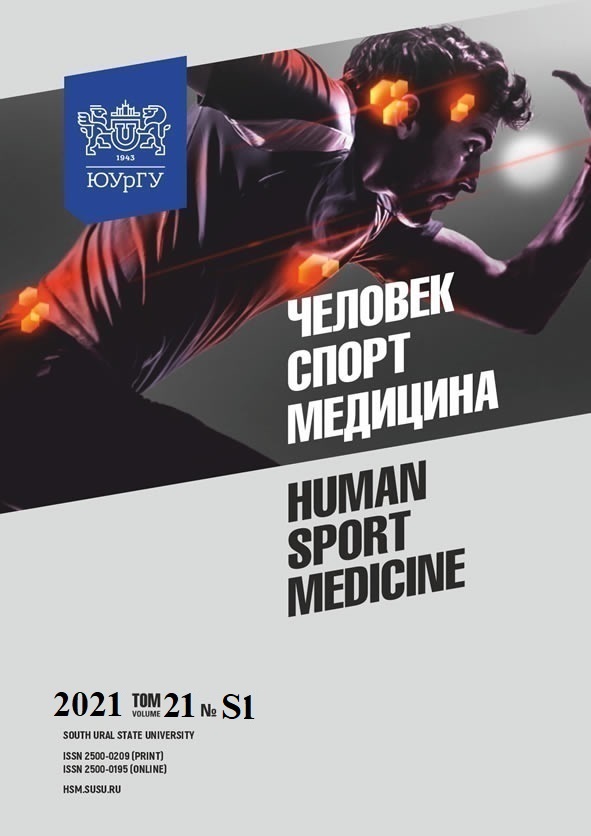PHYSICAL ACTIVITY AND SEDENTARY BEHAVIOR OF UNIVERSITY STUDENTS ON THE RUSSIAN NORTH
Abstract
The paper aims to analyze physical activity (PA) intensity levels and PA domains in Surgut State University (SSU) students in comparison with their EU peers on a gender- and age-specific basis. Results. Surgut State University students (n = 376, including 160 males and 216 females) of different ages participated in the study. It was found that PA averaged 1804 and 1707 МЕТ-min/week for male and female subsamples, respectively; the correlations were found between age and transportation PA (p = 0.0021), walking PA (p = 0.0021), total PA (p = 0.0253) for the female subsample; and between age and working PA (p = 0.0099), walking PA (p = 0.0278) and sedentary time (p = 0.001) for the male subsample. The gender-unspecific equations were obtained to rate the correlations between age and working PA (p = 0.0206), transportation PA (p = 0.0284), walking PA (p = 0.0001), total PA (p = 0.0086) and sedentary time (y = –3129 + 532x – 11.49x2 r = 0.1479; p = 0.0041). Furthermore, correlations were found between sedentary time and body mass indices for the male subsample (y = –3283 + 425x – 7.23x2 r = 0.1578; p = 0.0463) and the gender-unspecific correlations for students’ domestic/gardening PA (y = 1153 – 46x + 0.45x2 r = –0.1321; p = 0.0103). The reported weekend sedentary time of SSU students was much higher than that of their peers from Poland, Czech Republic, Hungary and Slovakia, with the female subsample weekend sedentary time being higher than in the male subsample both in SSU students (p = 0.0015) and EU countries (p = 0.0000). Conclusion. On the whole the study data and analysis showed SSU students’ PA being inadequate for both gender groups.
References
References on translit
Copyright (c) 2021 Human. Sport. Medicine

This work is licensed under a Creative Commons Attribution-NonCommercial-NoDerivatives 4.0 International License.















